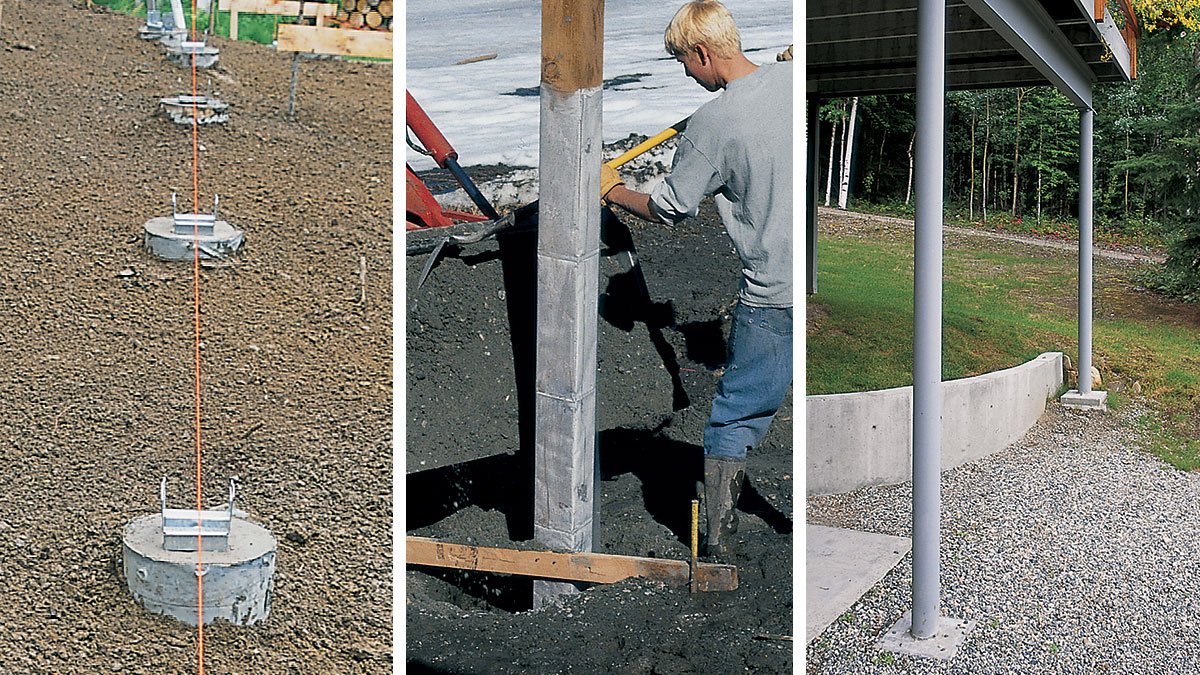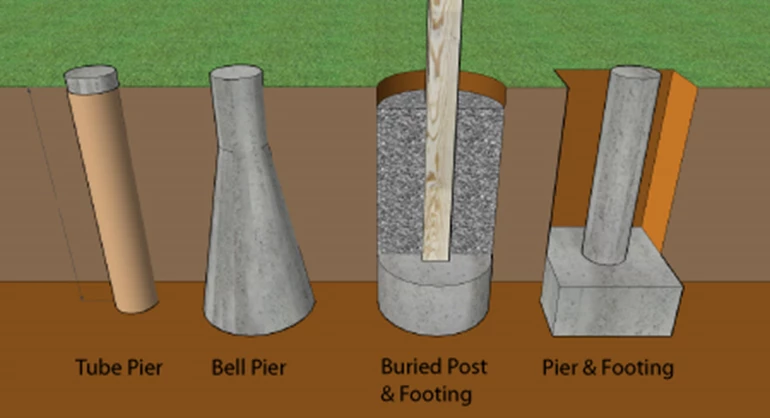Choosing the Right Deck Footings for Stability and Sturdiness
The long life and safety and security of your deck depend greatly on the type of grounds you pick, as they provide the essential assistance and security to stand up to the test of time. In this discussion, we will explore the various types of deck footings, think about the important variables to weigh when making a choice, and dive right into the pros and cons of different choices.
Kinds Of Deck Grounds
There are numerous types of deck footings that can be utilized, each offering special benefits and factors to consider. One typical kind of footing is the concrete pier ground. These grounds include a round opening loaded with concrete, which provides a solid structure for the deck articles. Concrete pier footings are reasonably simple to install and use exceptional stability, making them a popular choice for many deck tasks.
These footings are set up by screwing them into the ground, which produces a secure foundation for the deck. They additionally allow for very easy modification and leveling of the deck if required.
Additionally, some building contractors select precast concrete footings. These footings are made of sturdy concrete and can be found in different sizes and shapes to suit different deck designs. Precast concrete footings are convenient to mount and provide a steady base for the deck framework.
Lastly, one more choice is the post-in-anchor footing system. This kind of footing involves driving a steel support into the ground and attaching it to the deck article. It uses versatility in terms of placing the deck articles and is ideal for decks with lightweight structures.
When choosing the appropriate kind of deck footing, it is necessary to think about factors such as dirt problems, deck load, and neighborhood building regulations (Deck Footings). Consulting with a specialist service provider or structural engineer can help guarantee the appropriate footing is picked for a risk-free and secure deck
Variables to Consider When Picking Footings
When choosing the proper footings for a deck, it is critical to thoroughly take into consideration numerous factors such as dirt problems, deck lots, and adherence to local building regulations. These elements play a substantial function in making certain the security and toughness of the deck framework.
The kind of soil on which the deck will be constructed figures out the kind of grounds needed. On the various other hand, decks developed on clay or expansive dirts might need grounds that can suit the soil's tendency to increase and contract.
Another crucial element is the deck load. The weight of the deck, including the materials made use of and any prospective live tons such as furnishings or events, need to be taken right into account when selecting footings. The grounds must be created to birth the weight of the deck and disperse it uniformly to avoid any architectural concerns or failings.
Finally, adherence to neighborhood building ordinance is paramount. Structure codes vary from region to region, and it is important to conform with the particular needs established by the regional authorities. Deck Footings. These codes guarantee that the deck is built safely and fulfills the essential standards for structural honesty and load-bearing capacity
Concrete Grounds: Advantages And Disadvantages

Concrete footings use several advantages and disadvantages when utilized as the structure for a deck. On the favorable side, concrete grounds give outstanding stability and resilience. Concrete is a rigid and solid product that can support hefty tons and stand up to various climate conditions. It likewise has a long life expectancy, making it a dependable selection for lasting usage.
An additional benefit of concrete grounds is their convenience. They can be poured right into different forms and sizes to fit different deck designs and configurations. Concrete grounds can be customized to fit the particular needs and needs of the deck framework.
Nonetheless, there are also some downsides to making use of concrete grounds. This can raise the total expense of the deck project and might need expert aid.

Helical Piers Vs. Sonotubes: Which Is Better?
In considering the foundation options for a deck, the comparison between helical piers and sonotubes is crucial in establishing the superior selection. They are twisted right into the ground utilizing hydraulic machinery, giving a sturdy and stable structure for the deck.
The helical plates on the piers develop a strong grip with the dirt, changing or protecting against any kind of motion of the deck. Sonotubes, on the various other hand, click over here now rely entirely on the concrete loading for security, which may not use the same degree of strength and resistance.
In terms of setup, helical piers are reasonably easier and faster to set up compared to sonotubes. The hydraulic machinery utilized to turn the piers into the ground makes certain a efficient and quick process. Sonotubes, on the other hand, call for digging holes and putting concrete, which can be taxing and labor-intensive.
Additionally, helical piers are a more versatile choice. They can be made use of in various dirt conditions and can be changed or enhanced if needed. Sonotubes, on the other hand, might call for extra support, such as rebar, in particular soil conditions or locations with high lots demands.
Selecting the Right Footings for Your Deck's Measurements
For optimal architectural stability, it is necessary to meticulously pick the ideal footings that straighten with the dimensions of your deck. The measurements of your deck, including its size, height, and length, play a significant role in establishing the type and dimension of grounds needed.
When choosing footings for your deck, it is very important to take into consideration the load-bearing capacity of the dirt. The weight of the deck, incorporated with the weight of any kind of furnishings or people on it, exerts a substantial pressure on the grounds (Deck Footings). Therefore, it is crucial to choose grounds that can appropriately support this weight without sinking or changing gradually.
The shapes and size of the grounds need to additionally be taken into consideration. Larger decks with higher measurements call for larger footings to provide adequate security and support. The shape of the footings, whether they are round or square, depends upon the layout and design of the deck. In addition, the deepness at which the grounds are set up ought to be determined Clicking Here based upon the frost line in your area to stop any kind of heaving or changing as a result of freezing temperature levels.
Conclusion
In verdict, selecting the appropriate deck grounds is vital for making sure security and sturdiness. Elements such as the kind of grounds, the deck's dimensions, and the pros and disadvantages of various choices should be taken into consideration.
These you can look here footings are composed of a cylindrical hole filled with concrete, which provides a solid foundation for the deck articles. Concrete pier grounds are fairly easy to install and provide outstanding stability, making them a prominent choice for lots of deck jobs.
Precast concrete footings are convenient to mount and supply a stable base for the deck framework.
It uses adaptability in terms of positioning the deck blog posts and is suitable for decks with light-weight frameworks.
Concrete footings offer numerous benefits and disadvantages when used as the foundation for a deck.